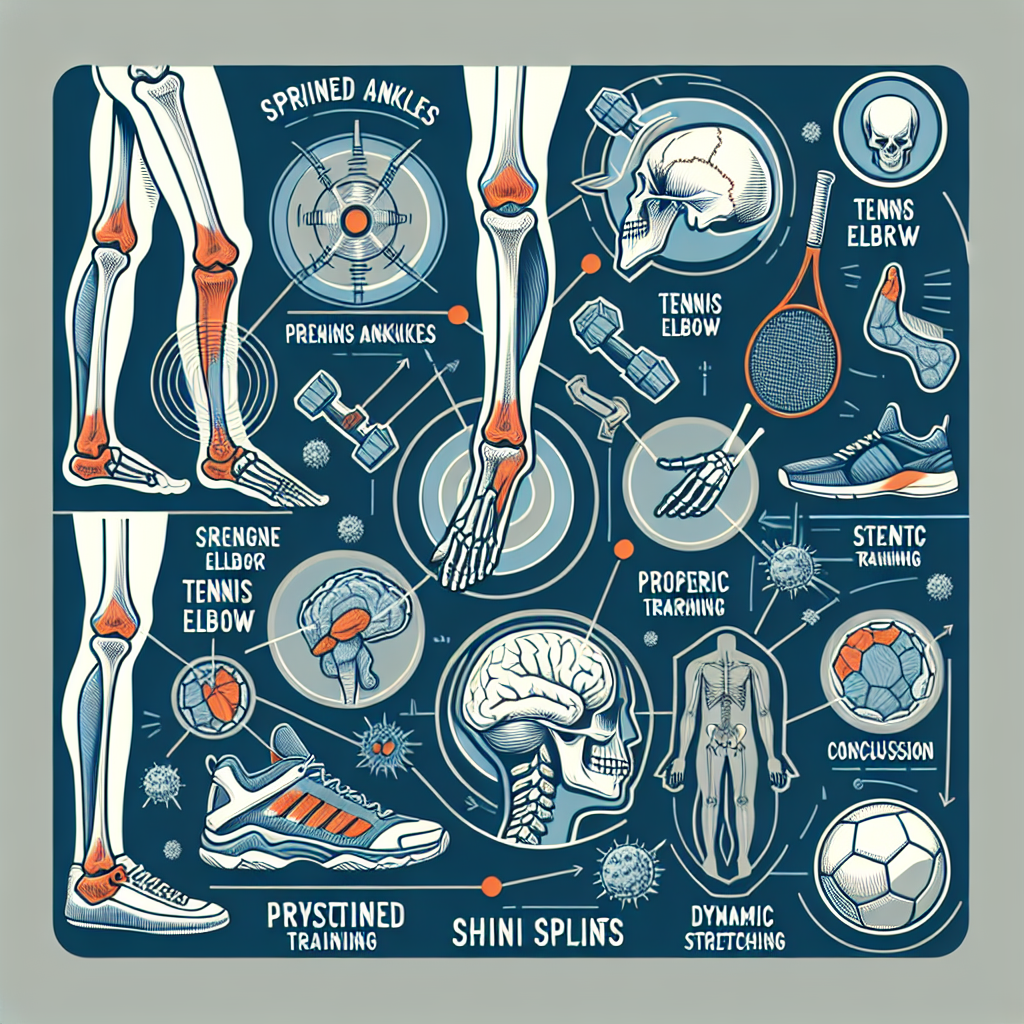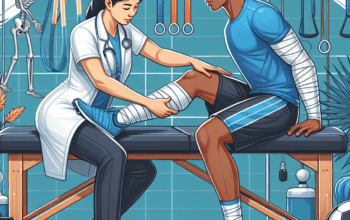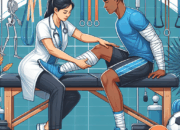Sports participation is a vital part of millions of people’s lives worldwide, promoting fitness, teamwork, and overall well-being. However, with this enthusiasm can come the risk of injuries. Understanding common sports injuries and their prevention is crucial for athletes, coaches, and fitness enthusiasts alike. This comprehensive article will cover prevalent sports injuries, effective preventive measures, and essential strategies to mitigate risks in the year 2025 and beyond.
Common Types of Sports Injuries
Sports injuries can be broadly categorized into two types: acute injuries and chronic injuries. Acute injuries occur suddenly and are often the result of a specific incident, such as a fall, collision, or awkward landing. Common examples of acute injuries include sprains, fractures, and strains. Sprains are injuries to ligaments—tissues connecting bones to each other—while strains involve muscles or tendons. Fractures can range from hairline cracks to complete breaks and are particularly common in high-impact sports.
Chronic injuries, on the other hand, develop gradually over time due to repetitive stress on the muscles, joints, or tendons. Conditions like tendinitis and stress fractures fall under this category. For instance, tendinitis often affects athletes participating in sports that require repetitive overhead motion, such as basketball or swimming, leading to inflammation and pain. Understanding the differences between acute and chronic injuries is vital for athletes and coaches to ensure appropriate prevention strategies are employed.
Prevention Strategies for Sports Injuries
Preventing sports injuries starts with proper training and conditioning. Athletes must engage in sport-specific training that strengthens the muscles and joints used during competition. This includes enhancing flexibility through stretching exercises and building strength in core and supporting muscle groups. Additionally, proper warm-up and cool-down routines before and after activities can help prepare the body for exertion while reducing the risk of injury.
Another essential prevention strategy is the use of appropriate gear and equipment. In 2025, advancements in sports technology have led to gear that better protects athletes. This includes sneakers designed for specific sports that provide increased ankle support and padding to absorb shock, as well as helmets and protective pads that minimize the risk of head injuries in contact sports. Coaches and parents should ensure that young athletes are equipped with the right gear tailored to their sport and skill level, as this can significantly reduce injury rates.
Understanding Injury Signs and Symptoms
Recognizing the signs and symptoms of sports injuries is crucial for timely intervention and recovery. Common signs of injury may include swelling, bruising, pain during movement, and restricted range of motion. In some cases, the athlete may hear a popping sound at the time of injury or feel immediate pain. It is essential for athletes and coaches to be proactive in assessing any inexplicable pain or discomfort, as neglecting these warning signs can lead to chronic issues requiring extended rehabilitation.
Athletes should be educated about the importance of listening to their bodies. Ignoring pain or pushing through injuries can exacerbate conditions, leading to more severe injuries. Regular team meetings focusing on injury education can empower athletes to take charge of their health and make informed decisions about their participation. Coaches can play a vital role by fostering an environment where players feel comfortable reporting injuries without fear of judgment or repercussions.
The Role of Rest and Recovery in Injury Prevention
Adequate rest and recovery are often overlooked aspects of injury prevention. As athletes push their limits, they may neglect the need for recovery time, increasing their risk of overuse injuries. The concept of periodization has become increasingly recognized in sports training, which promotes structured training cycles that account for rest and recovery. Athletes are encouraged to alternate intense training with active recovery days, allowing their bodies to heal and rejuvenate.
In 2025, developments in sports recovery technology, such as cryotherapy, compression therapy, and advanced physiotherapy techniques, have made recovery more effective. Athletes are now exposed to a variety of methods that can expedite the healing process, reduce soreness, and prepare them for future training. Coaches should incorporate recovery tools and strategies into their training regimens, ensuring athletes understand that adequate recovery is just as important as training to prevent injuries.
Education and Support Systems in Sports Injury Prevention
Education and support systems play a pivotal role in sports injury prevention. Coaches, trainers, and medical staff must work together to create an environment where injury awareness is central to the athletic experience. This allows for early identification and intervention when injuries occur. Regular workshops or training sessions on injury prevention, sports medicine, and first-aid techniques should be an integral part of every sports program.
Moreover, psychological support cannot be overlooked. Athletes often face pressure to perform despite injury, which can lead to dangerous situations. Mental health resources and counseling should be made available, helping athletes deal with the anxiety and stress that may accompany injuries. In 2025, there is a more concerted effort to address mental health in sports, realizing that a healthy mindset contributes directly to physical well-being and can enhance performance while minimizing injury risk.
Long-Term Considerations for Athletes
Injuries can have lasting impacts on an athlete’s career, making long-term considerations vital. Understanding that some injuries may require surgeries, extensive rehabilitation, and a significant amount of time off from their sport is crucial for athletes and their support teams. Education around injury implications will help set realistic expectations for recovery periods and return-to-play timelines.
Moreover, as athletes age, the risk of injuries increases, necessitating a focus on longevity in their respective sports. Athletes should be encouraged to diversify their physical activities to avoid overuse injuries while maintaining overall fitness. Incorporating cross-training into training regimens can help build a more resilient body and extend an athlete’s career while preventing injuries.
Finally, athletes should remain cognizant of their physical and emotional limits. As the landscape of sports continues to evolve, staying informed about injury prevention practices will empower athletes to maintain their health and performance levels throughout their careers.
Conclusion
In summary, understanding common sports injuries and their prevention is essential for athletes, coaches, and fitness enthusiasts alike. By recognizing different types of injuries, implementing effective prevention strategies, and fostering education and support systems, the risks associated with sports can be significantly reduced. As we move forward in 2025, the integration of technology, awareness, and research will continue to shape the future of sports and injury prevention, allowing athletes to thrive in their sports while minimizing the risk of injury.
FAQs About Understanding Common Sports Injuries and Their Prevention
What are the most common types of sports injuries?
Common sports injuries include sprains, strains, fractures, tendinitis, and shin splints. Understanding these injuries can help in their prevention and treatment.
How can I prevent sports injuries?
To prevent sports injuries, engage in proper warm-up and cool-down routines, strengthen key muscle groups, ensure a good understanding of training techniques, and use appropriate protective equipment.
What should I do if I suspect I have a sports injury?
If you suspect a sports injury, it’s crucial to stop the activity, apply rest, ice, compression, and elevation (RICE), and consult a healthcare professional for a thorough assessment.
Are there specific prevention strategies for youth athletes?
Yes, youth athletes should focus on proper training methods, use age-appropriate gear, and ensure supervision and education on injury awareness to foster a safe sporting environment.
How does mental health impact sports injury prevention?
Mental health can significantly influence physical performance and awareness of injuries. Athletes who have access to mental health resources are better equipped to deal with the stresses associated with injury and performance, contributing to a holistic approach to injury prevention.












